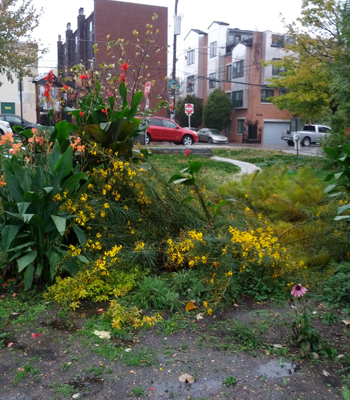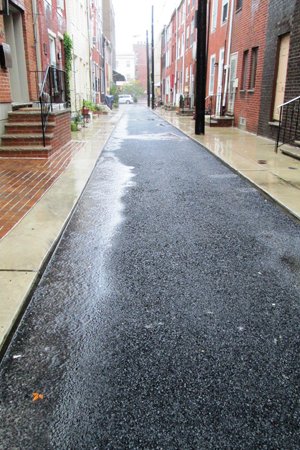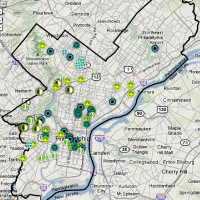Going With the Flow: PWD and Hurricane Sandy
This time last Monday, communities all along the East Coast braced for Hurricane Sandy, a ferocious event pushing tropical storm conditions into a cold front directly over the Northeast, all during the high tides of a full moon. The massive storm had widespread impacts and images from NY and NJ show significant damage and a long road to recovery. From power outages, to blocked roads, to flooding, few events turn our collective attention to infrastructure with as much force as big storms.
Philadelphia Water Department staff worked from Thursday through Tuesday to prepare for the storm, clearing over 3,000 stormwater inlets in low-lying areas, and removing 155 tons of debris throughout the city. Clear inlets allow runoff to flow into the sewer system unimpeded by leaves or trash, which helps prevent localized flooding. In addition, PWD monitored both waste water and drinking water plants to ensure proper function during the hurricane.
After the storm passed, the Philadelphia Water Department worked closely with the Department of Parks & Recreation to remove trees and debris and lent equipment such as stingers, dumps and backhoes to help with the cleanup. Although trees were down, and power out for some, Philadelphia fared well during Hurricane Sandy, in part due to proper preparation, and in large part due to the luck of geography that protected the City from the devastating ocean flood waters that caused havoc in NY and NJ. Look at these articles to read (and listen) more about how Philadelphia’s infrastructure worked during Hurricane Sandy:
“Hurricane Sandy, Day 2: Jersey Shore, Philly water, Delaware”
Water Commissioner Howard Neukrug speaks to Marty Moss-Coane on Radio Times
NPR, October 30th
The interview with the Water Commissioner begins at 15:00.
“A post-Sandy look at how Philadelphia streets flood”
Philadelphia Inquirer, Sunday, November 4th
Adam Levine
Flooding In Sight
Hidden City Philadelphia, October 29th
Adam Levine
Fortunately for Philadelphia (and the whole eastern seaboard), storms like Hurricane Sandy don’t happen too frequently. Ninety percent of storms are much smaller and drop an inch or less of rain on the Philadelphia area. This is an important inch! The first rain that falls on the ground picks up all the dirt and grime of our city streets. In many parts of Philadelphia, this water combines with sewage from homes and businesses in the same sewer pipe that transports water to one of three Philadelphia treatment plants. During heavy rainfall, the system is designed to overflow without treatment, to keep the water moving and avoid sewer backups. This design leads to combined sewer overflows, and increases pollution in our streams. These frequent, smaller storms are the target for Green City, Clean Waters, Philadelphia’s 25-year plan to manage wet weather through green stormwater infrastructure (GSI).
What about Green Stormwater Infrastructure during a Hurricane?
Although green stormwater infrastructure only plays a small role in big storms like Hurricane Sandy, we still ventured out in the rain to check out the City’s infrastructure!

Columbus Square Stormwater Planter, 13th and Reed
The stormwater planter at Columbus Square fills with water during Hurricane Sandy, capturing stormwater from the surrounding hard surfaces.

Liberty Lands Rain Garden, 960 N Bodine Street
Water ponds in the rain garden at Liberty Lands, holding water that would otherwise enter our sewer system. After the rain, the water slowly seeps into the ground.

Percy Street Porous Asphalt, 900 S Percy Street (credit: Leah Rominger, CH2M Hill)
A few puddles show that the rain took some time to filter through the porous street, but overall, the surface managed the storm very well.





